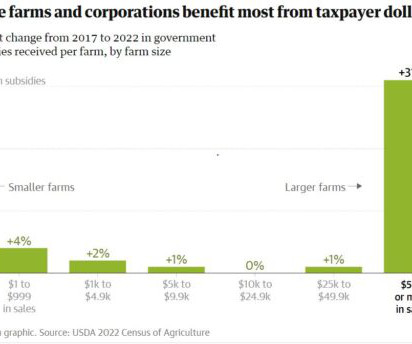USDA’s latest census of agriculture: not an encouraging picture
Food Politics
FEBRUARY 27, 2024
It summarizes the highlights: Number of farms: 1.9 million (down 7% from 2017) Average size: 463 acres (up 5%) Total farmland: 880 million acres of farmland (down 2%), accounting for 39% of all U.S. Farms with sales of $50,000 or less: 1.4 million (74% of farms); they sell 2%. For example: What more to say?











Let's personalize your content